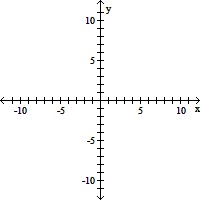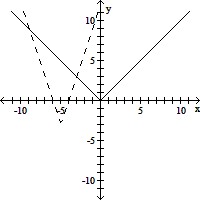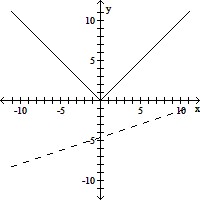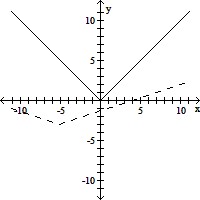Two sides and an angle are given. First, determine whether the given information results in no triangle, one triangle, or two triangles. Solve each resulting triangle.A = 65°, a = 4, b = 6
A. one triangle; B = 34°, C = 81°, c = 14
B. one triangle; B = 32°, C = 83°, c = 12
C. no triangle
D. one triangle; A = 33°, C = 82°, c = 10
Answer: C
You might also like to view...
Use Gauss-Jordan elimination to solve the linear system and determine whether the system has a unique solution, no solution, or infinitely many solutions. If the system has infinitely many solutions, describe the solution as an ordered triple involving variable z. 5x - y + z = 8 7x + y + z = 6
A. (-z + 3, 4z + 7, z)
B. 
C. no solution
D. 
Factor the expression completely.
?

What will be an ideal response?
Use transformations of graphs to sketch the graphs of y1 and y2. Graph y2 as a dashed curve.y1 =  , y2 =
, y2 = 
 - 3
- 3
A. 
B. 
C. 
D. 
Solve the inequality. Express your answer using interval notation.-17 ? -3x + 1 < -11![]()
A. [-6, -4)![]()
B. [4, 6)![]()
C. (4, 6]![]()
D. (-6, -4]![]()